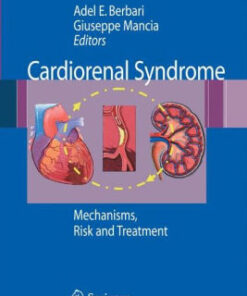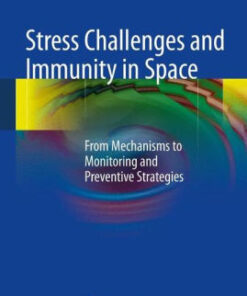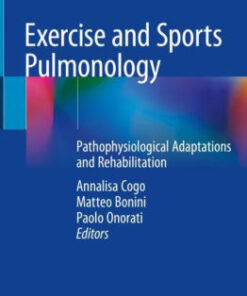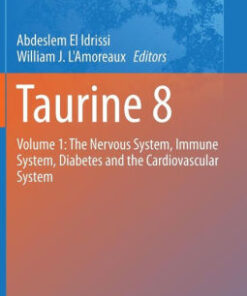(PDF) Neurokinetics – The Dynamics of Neurobiology in Vivo by Albert Gjedde
$22.00
Download instantly Neurokinetics – The Dynamics of Neurobiology in Vivo by Albert Gjedde, William R. Bauer, Dean Wong. It is ebook in PDF format.
ISBN-10: 1441974083 ISBN-13: 9781441974082
Preview
This is the PDF eBook version for Neurokinetics – The Dynamics of Neurobiology in Vivo by Albert Gjedde, William R. Bauer, Dean Wong
Table of Contents
1 Introduction to Compartmental Analysis 1
1.1 Concept of Compartments 1
1.1.1 Living Systems 1
1.1.2 Thermodynamics and Entropy 3
1.1.3 Fundamental Solution 6
1.1.4 Limitations of Compartmental Analysis 6
1.2 Single Tissue Compartment Analysis 7
1.3 Two Tissue Compartment Analysis 9
1.3.1 Compartmental Assumptions 9
1.3.2 Combined Compartments 12
1.3.3 Arteries and Veins 13
1.4 Three Tissue Compartment Analysis 14
1.4.1 Compartmental Assumptions 15
1.4.2 Combined Compartments 20
2 Fundamentals of Compartmental Kinetics 23
2.1 Definition of Relaxation Constants 23
2.1.1 Single Compartment 24
2.1.2 Two Compartments 25
2.1.3 Two Compartments with Sink 28
2.1.4 Three Compartments 30
2.1.5 Three Compartments with Sink 34
2.1.6 Four or More Compartments 36
2.1.7 Multiple Compartments in Series and in Parallel 39
2.2 Interpretation of Relaxation Constants 42
2.2.1 Flow 42
2.2.2 Passive Diffusion 43
2.2.3 Properties of Delivery Compartment 49
2.2.4 Protein-Ligand Interaction 56
2.2.5 Receptor Binding 61
2.2.6 Facilitated Diffusion 63
2.2.7 Enzymatic Reactions 67
2.3 Determination of Relaxation Constants 70
2.3.1 Stimulus-Response Relations 70
2.3.2 Regression Analysis 71
2.3.3 Deconvolution of Response Function by Differentiation 73
2.3.4 Deconvolution by Temporal Transformation 75
2.3.5 Deconvolution of Response Function by Linearization 86
2.4 Application of Relaxation Constants 91
2.4.1 Peroxidation 91
2.4.2 Dopaminergic Neurotransmission 91
3 Analysis of Neuroreceptor Binding In Vivo 103
3.1 The Receptor Concept 103
3.2 The Compartment Concept 105
3.2.1 Compartmental Analysis 105
3.2.2 The Basic Equation 106
3.2.3 The Basic Solution 107
3.3 Two-Compartment (Permeability) Analysis 108
3.3.1 Analysis of K1 and k2 108
3.3.2 Physiological Definitions of K1 and k2 110
3.4 Three-Compartment (Binding) Analysis 111
3.4.1 Analysis of k3 and k4 111
3.4.2 Molecular Definitions of k3 and k4 115
3.4.3 Inhibition 118
3.4.4 The Problem of Solubility and Nonspecific Binding 120
3.4.5 The Problem of Labeled Metabolites 122
3.5 In Vivo Analysis of Binding 122
3.5.1 Irreversible Binding: Determination of k3 122
3.5.2 Reversible Binding: Determination of Binding Potential (pB) 124
3.5.3 Equilibrium Analysis: Determination of Bmax and KD 126
4 Neuroreceptor Mapping In Vivo: Monoamines 131
4.1 Introduction 131
4.2 Monoaminergic Neurotransmission 131
4.3 Methods of Neuroreceptor Mapping 133
4.3.1 Tracers of Monoaminergic Neurotransmission 136
4.3.2 Pharmacokinetics of Monoaminergic Neurotransmission 140
4.4 Altered Monoaminergic Neurotransmission 145
4.4.1 Dopamine 146
4.4.2 Serotonin 149
4.4.3 Design of Monoaminergic Drugs 151
4.5 Conclusions 151
5 Blood-Brain Transfer and Metabolism of Oxygen 153
5.1 Introduction 153
5.2 Blood-Brain Transfer of Oxygen 154
5.2.1 Capillary Model of Oxygen Transfer 154
5.2.2 Compartment Model of Oxygen Transfer 157
5.3 Oxygen in Brain Tissue 159
5.3.1 Cytochrome Oxidation 159
5.3.2 Mitochondrial Oxygen Tension 161
5.4 Flow-Metabolism Coupling of Oxygen 165
5.5 Limits to Oxygen Supply 167
5.5.1 Distributed Model of Insufficient Oxygen Delivery 168
5.5.2 Compartment Model of Insufficient Oxygen Delivery 171
5.6 Experimental Results 172
5.6.1 Brain Tissue and Mitochondrial Oxygen Tensions 172
5.6.2 Flow-Metabolism Coupling 173
5.6.3 Ischemic Limits of Oxygen Diffusibility 176
6 Blood-Brain Glucose Transfer 177
6.1 Brief History 177
6.2 Brain Endothelial Glucose Transporter 178
6.2.1 Molecular Biology 178
6.2.2 Molecular Kinetics 180
6.2.3 Structural Requirements of Glucose Transport 181
6.3 Theory of Blood-Brain Glucose Transfer 182
6.3.1 Apparent Permeability and Flux 183
6.3.2 Facilitated Diffusion 186
6.3.3 Multiple Membranes 189
6.4 Evidence of Blood-Brain Glucose Transfer 191
6.4.1 Methods 192
6.4.2 Normal Values in Awake Subjects 196
6.4.3 Acute Changes of Glucose Transport 201
6.4.4 Chronic Changes 206
7 Metabolism of Glucose 211
7.1 Basic Principles of Metabolism 211
7.1.1 Glycolysis 212
7.1.2 Oxidative Phosphorylation 214
7.1.3 Gluconeogenesis 214
7.1.4 Glycogenesis and Glycogenolysis 215
7.1.5 Pentose-Phosphate Pathway 215
7.2 Kinetics of Steady-State Glucose Metabolism 215
7.3 Kinetics of Deoxyglucose Metabolism 217
7.3.1 Irreversible Metabolism 219
7.3.2 Lumped Constant 220
7.3.3 Reversible Metabolism 221
7.4 Operational Equations 224
7.4.1 Irreversible Metabolism of Deoxyglucose 224
7.4.2 Reversible Metabolism of Fluorodeoxyglucose 229
7.4.3 Metabolism of Tracer Glucose 231
7.5 Glucose Metabolic Rates 233
7.5.1 Lumped Constant Variability 235
7.5.2 Whole-Brain Glucose Consumption 237
7.5.3 Regional Brain Glucose Consumption 238
8 Neuroenergetics 241
8.1 Brain Work 241
8.2 Ion Homeostasis 242
8.3 Brain Energy Metabolism 244
8.3.1 Definition of Brain Activity Levels 244
8.3.2 Stages of Brain Metabolic Activity 246
8.4 Substrate Transport in Brain 248
8.4.1 Glucose Transport 248
8.4.2 Monocarboxylate Transport 249
8.4.3 Oxygen Transport 250
8.5 ATP Homeostasis 252
8.5.1 Hydrolysis of Phosphocreatine 253
8.5.2 Glycolysis 253
8.5.3 Oxidative Phosphorylation 256
8.6 Metabolic Compartmentation 259
8.6.1 Functional Properties of Neurons and Astrocytes 259
8.6.2 Metabolic Properties of Neurons and Astrocytes 260
8.7 Activation 265
8.7.1 Ion Homeostasis During Activation 266
8.7.2 Brain Energy Metabolism During Activation 267
8.7.3 Substrate Delivery During Activation 273
8.7.4 ATP Homeostasis During Activation 281
8.7.5 Metabolic Compartmentation During Activation 286
8.8 Conclusions 288
Glossary 291
References 301
Index 335




